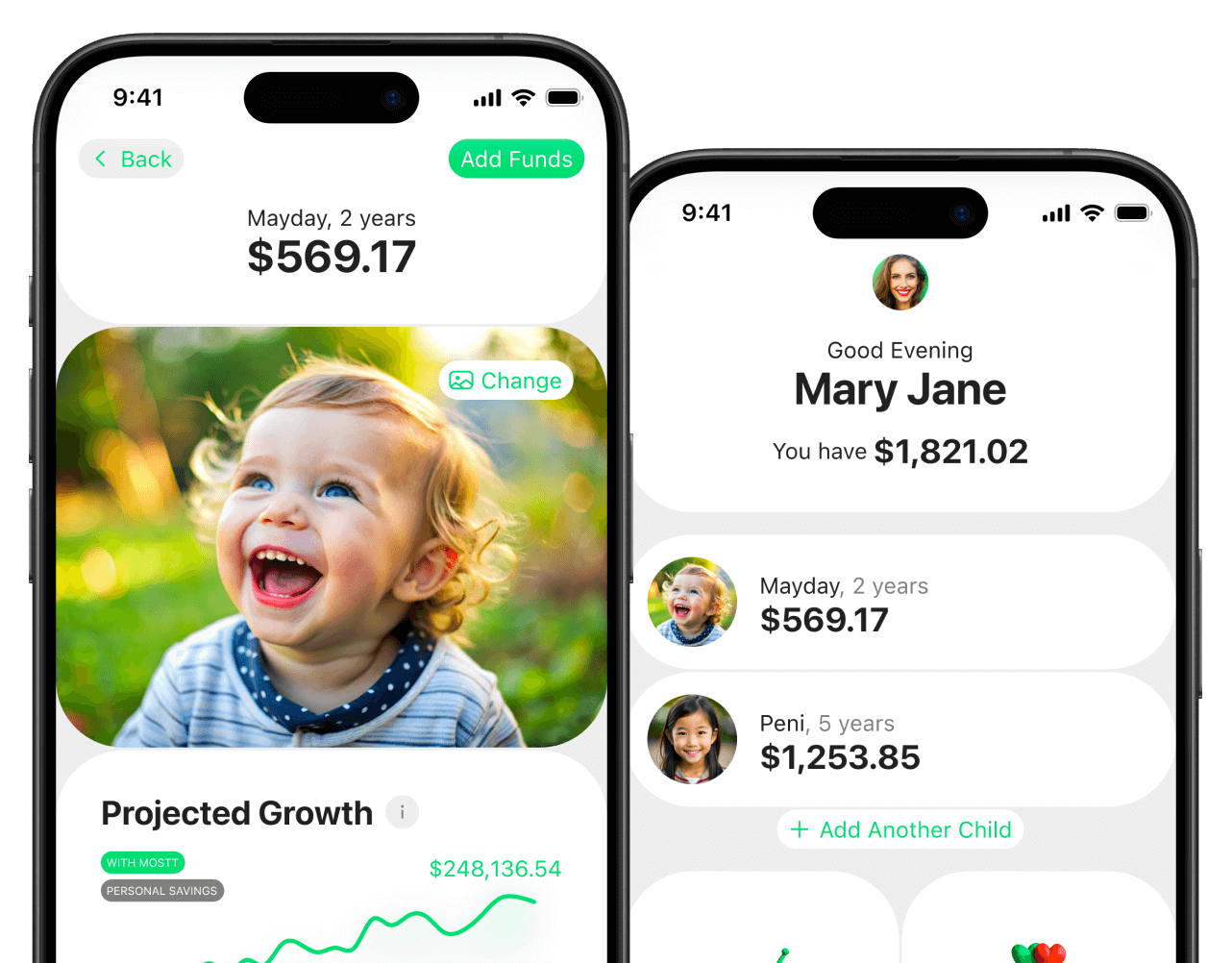Most parents want two things for their kids:
-
We want them to grow up financially confident.
-
We want them to become the kind of adults who make the world better, not smaller.
But in many homes, those two goals never really cross paths. We teach kids how to save. We teach them how to spend wisely. Sometimes we talk about investing. But generosity—the kind that changes communities—often gets saved for “someday.” Someday, when the checking account feels less tight. Someday, when the kids are older. Someday, when life finally slows down.
But what if generosity wasn’t supposed to be a later lesson?
What if it was meant to be baked in from the start?
Because here’s the truth: Kids learn generosity by watching how we use what we have today, not what we hope to have tomorrow.
And when giving and investing become part of the same conversation, something powerful happens — kids start seeing money not as something to fear or hoard, but as a tool that can grow and do good.
Let’s explore how to weave philanthropy into your family’s financial rhythm in a way that feels natural, meaningful, and even fun.
The Moment It Clicks for a Kid
Every parent’s had this moment:
You’re at the grocery store checkout, your child sees a charity jar, and they say, “We should help.” They mean it. They’re sincere. They’re not burdened by bills or timelines or gas prices. They just see a need.
Kids don’t need lectures on generosity;
They need examples.
When they see parents giving—even in small ways—they learn that money is not just for “me.” It’s for mission.
Research supports this. According to a guide from Fidelity Charitable, generosity isn’t just about money — kids often show giving behavior by sharing what they value (like a stuffed animal) long before they understand dollars and cents. (Fidelity Charitable)
When generosity becomes part of everyday life, it helps build an inner wellspring of compassion that can last a lifetime.
But here’s what makes this even better: when kids pair giving with growing money through investing, they understand something adults often struggle with — you can use wealth to make life better for your own family and for people you’ll never meet.
That’s a life skill worth passing down.
Build a Family Why (Kids Love Purpose More Than Percentages)
A lot of parents jump straight into the mechanics of money: percentage to save, percentage to spend, percentage to invest.
But kids don’t fall in love with percentages — they fall in love with purpose.
Before you ever talk numbers, talk why.
Ask your kids:
-
“What breaks your heart a little?”
-
“If you could fix one thing in the world, what would it be?”
-
“Who do you think needs help the most?”
Their answers might surprise you. Kids tend to think bigger than adults. Hunger. Animals. Clean water. Homelessness. Sick kids. Not having friends. They see the world without filters.
Once your family chooses a cause, money becomes more meaningful.
The giving isn’t random — it’s intentional.
Intentional giving builds intentional kids.
And research backs that up: children who engage in charitable or giving-oriented habits often show increased empathy, compassion, gratitude, and emotional well‑being. (Charity for Change)
That kind of emotional growth matters — now and decades later.
Create a Four-Part Money Plan: Save – Spend – Invest – Give
Most parents teach some version of “Save – Spend – Share.” It’s good. But you can take it a step further by adding one powerful upgrade:
Save – Spend – Invest – Give
A four-part money plan that mirrors real adult finances — and teaches values at the same time.
Here’s how it can work for kids:
1. Save (their future needs)
This is their safety net. Kids feel more secure knowing they have money tucked away.
2. Spend (their right-now wants)
This is the fun part: toys, games, treats, things they pick out themselves. Spending is where they learn control and healthy decision-making.
3. Invest (their long-term future)
This is where the magic happens. When kids see their investments grow — especially if you visually show them charts or growth over time — they begin understanding money as a seed, not just a ticket to a toy.
This mindset — money as potential, not entitlement — helps build patience, delayed gratification, and long-term thinking.
4. Give (their impact on the world)
And this? This is where their heart gets involved. Giving teaches gratitude, humility, and community-awareness.
When kids know up front that part of their earnings or allowance is always meant to help someone else, giving becomes a habit, not a decision. And kids who grow up expecting to give become adults who give without being asked.
This plan turns finances from a ledger into a living story: part security, part growth, part kindness.
Use Real Stories (Because Numbers Don’t Change Kids — People Do)
Kids learn money through stories, not spreadsheets.
Tell them about:
-
The single mom who used a community program to get back on her feet
-
The rescue dog who was adopted because a shelter stayed open
-
The child who received school supplies because someone donated
Then connect the story to your child’s giving:
“Your money helped someone like that.”
When kids see their small actions making real differences, even in simple ways, they start to believe they can matter. They see themselves as helpers, not just observers.
This is more than charity — it’s building identity. Because generosity becomes not just something you do, but something you are.
Families, churches, community groups, and charitable‑giving organizations all encourage this kind of storytelling and involvement from a young age. (All For Kids)
Seeing your own values in action helps children integrate generosity into their sense of self.
Set Up a Family Giving Goal (Make the Mission Bigger Than the Numbers)
Kids love goals. They love charts. Stickers. Progress bars. Anything that shows they’re moving forward.
You can turn philanthropy into a shared family journey:
-
Create a Family Giving Thermometer on the fridge or whiteboard
-
Track donations toward one specific project (school supplies, animal shelter, food pantry)
-
Celebrate milestones as a family — not for bragging, but as recognition of compassion and community
It doesn’t have to be a lot. Even $20 per month, intentionally set aside, feels like a big deal to a child. Because it’s not about the size of the gift — it’s about the heart behind it.
And giving with a goal helps move generosity beyond “nice” — into “normal.”
Teach Them That Time Is Also Wealth
Money isn’t the only way to give. In fact, giving time — through volunteering, acts of kindness, community service — can often have deeper impact than dollars alone.
Whether it’s packing food at a shelter, visiting elderly neighbors, helping a local church or community group — when children see that their time and energy matter, they begin to understand generosity as a lifestyle, not a line item.
Building that habit fosters empathy, social awareness, and a sense of purpose that lasts a lifetime. (Children’s Health)
When money and time become tools for good, kids learn their worth isn’t just tied to what they own, but what they give.
Why This Matters More Than Ever
We live in a world that often says the goal is to “get”:
Get more toys. Get more clothes. Get more social likes. Get more.
But families have the chance to teach a different value: Use what you have to give life, not just get things.
And research shows that teaching children generosity leads to real, measurable benefits: greater empathy, improved emotional well‑being, stronger social skills, and a better sense of responsibility. (Indiana Youth Institute)
Kids who give — even small amounts — tend to grow into adults who care.
Kids who invest — even small amounts — tend to grow into adults who plan, grow, and build stability.
Putting those together, you’re raising not just financially wise children — but intentionally kind, purpose‑driven adults.
The Legacy You Build Starts Now
If you want your kids to be generous adults someday, don’t wait for “someday.”
Start now.
Teach them:
-
why giving matters
-
how investing works
-
how money can move the world forward
And then…
show them.
You’re not just teaching them to manage money.
You’re teaching them to manage impact.
Years from now — when they grow up, raise their own families, and maybe teach their kids the same lessons — your intentional parenting will ripple out into the world.
That’s not just good parenting.
That’s legacy.




